We decided that propagating peach trees from softwood cuttings was the way to go when we couldn’t find the variety we wanted at the store this past week.
The best eating peach we’ve ever grown here at Seven Oaks Farm is “Red Haven.” It was recommended by our neighbor, a man whose family has farmed this area since the 1700s. He said the his “Red Haven” peach tree was a solid producer. We added one to our orchard three years ago and so far, enjoyed one peach from the tree.
Red Haven ought to be called “Red Heaven” because that fresh peach was EVERYTHING a fresh peach out to be. Sweet. Juicy. Filled with peach flavor. When Hubby and I split the peach, we ate it standing in the orchard under its branches, juice dripping down our chins, the buzz of summer bees in the air. It was…heaven in a fruit.
Seriously.
Since then, we’ve been on a quest to replace the four “Elberta” peach trees in our orchard with “Red Haven.” But the local “big box” garden center where we bought it originally hasn’t carried it since!
So, with a bit of frustration and determination, I pulled out my book on plant propagation and decided to propagate a peach tree from a softwood cutting.
The post contains affiliate links. We are a participant in the Amazon Services LLC Associates Program, an affiliate advertising program designed to provide a means for us to earn fees by linking to Amazon.com and affiliated sites. Thanks so much for being a part of Home Garden Joy!
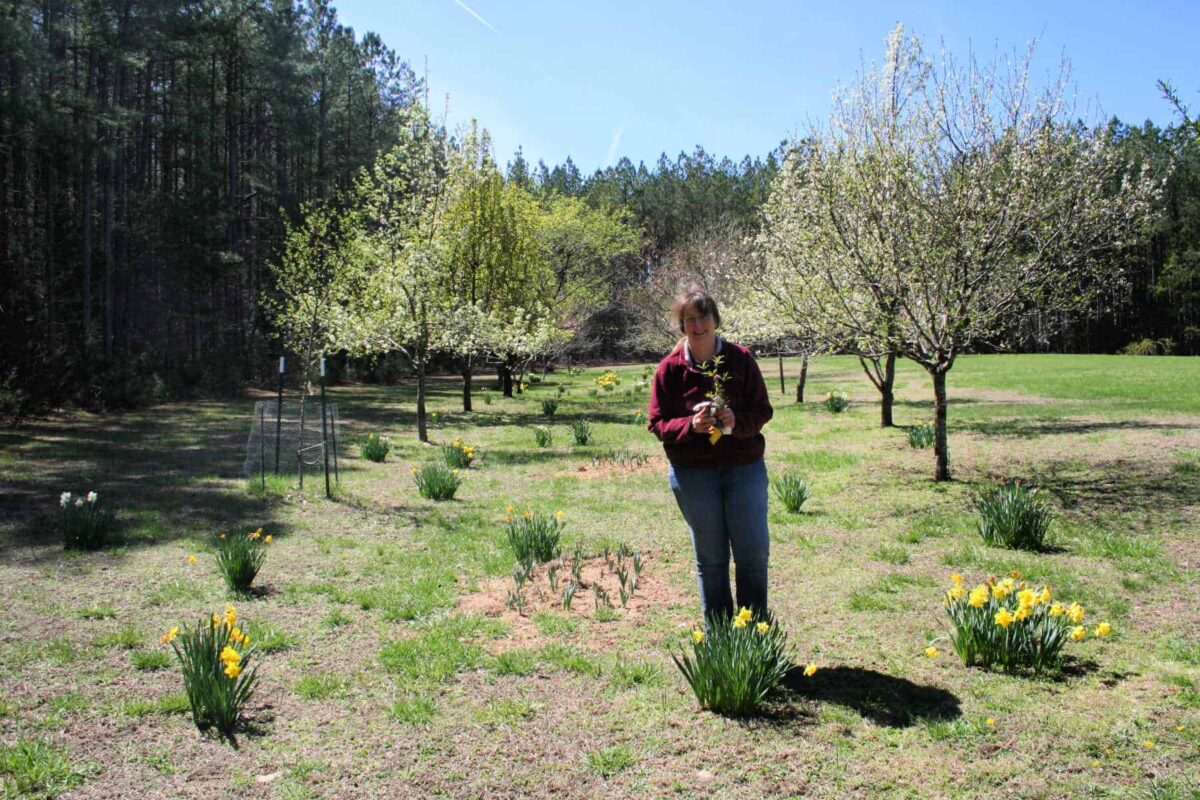
Why Try Propagating Peach Trees from Softwood Cuttings?
Cuttings aren’t the usual way to propagate peach trees. Most peach trees are grafted. Grafting involves cutting two healthy trees and splinting them together so that one variety grows onto the root stock of another. This is done because many fruit trees, peaches included, that produce delicious fruit lack the strong, tough, and vigorous growth habits of other varieties. By grafting the trees, you’re able to retain the vigor of an older root stock (which may produce less tasty fruit) and the traits of the fruit from the topmost graft.
Peach trees are one of the few fruit trees that can be rooted from softwood cuttings. A softwood cutting takes a stem of softwood, or wood from fresh growth stems.
April in my gardening zone is a great month to try rooting softwood or stem cuttings from trees. The trees are growing rapidly, and are inclined to root more easily.
Step by Step Propagation of a Peach Tree from Cuttings
I think it goes without saying that you need a healthy peach tree, preferably flush with new growth, to take your cuttings from. If you have a tree you’d like to try to root cuttings from, then follow these steps.
What You’ll Need to Root Peach Tree Branches
- Clean, sterilized pot
- Sterile potting soil
- Plastic bag
- Rooting Hormone powder
- Clean, sterilized hand pruners
- Clean, sterilized knife, such as an X-acto knift
- Parent plant
Step 1: Sterilize Your Pot
To sterilize your pot and ensure no lingering microorganisms are on it that can cause your cuttings to fail, clean the pot in water. Make a solution of 9 parts water to 1 part bleach and after cleaning the pot of all debris, soak it in the bleach and water solution for 20 minutes. Remove it from the solution, rinse, and air dry.
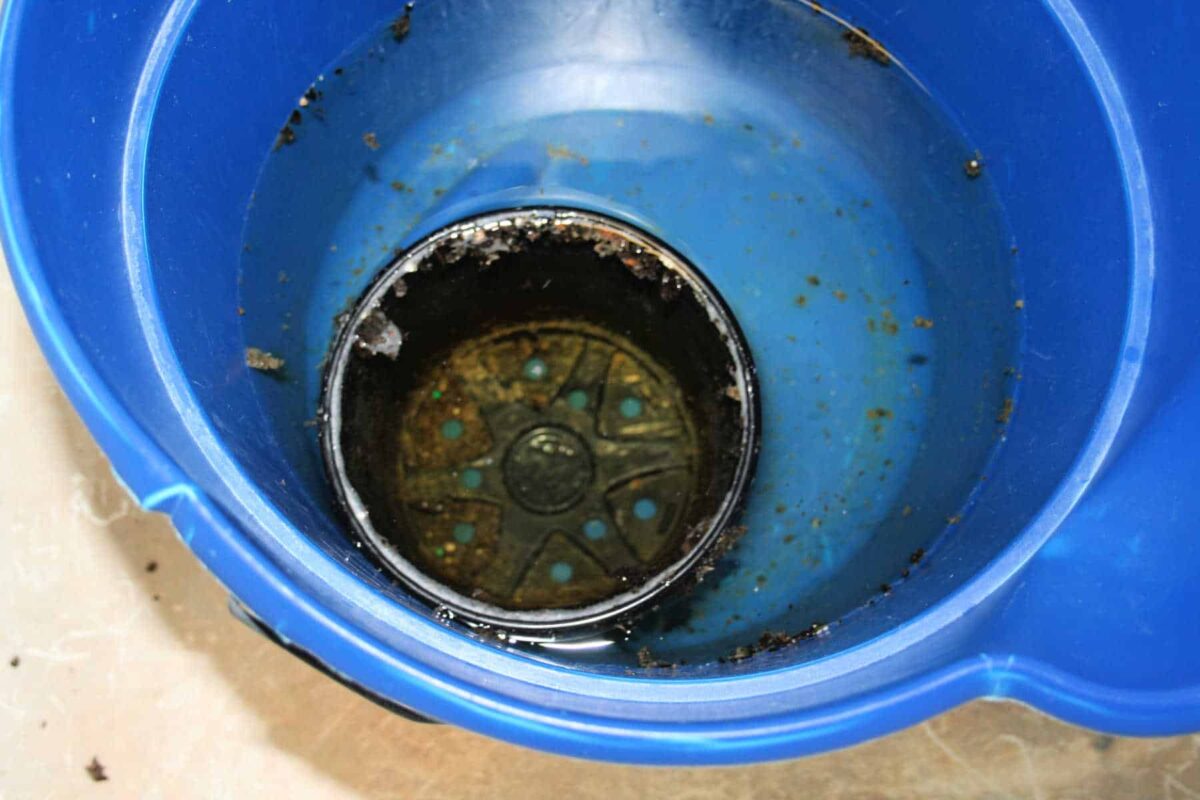
Step 2: Take Your Cuttings
Choose cuttings that have new growth and are about 4 to 6 inches long. Cut them at an angle, just above a nodule or joint in the stem.
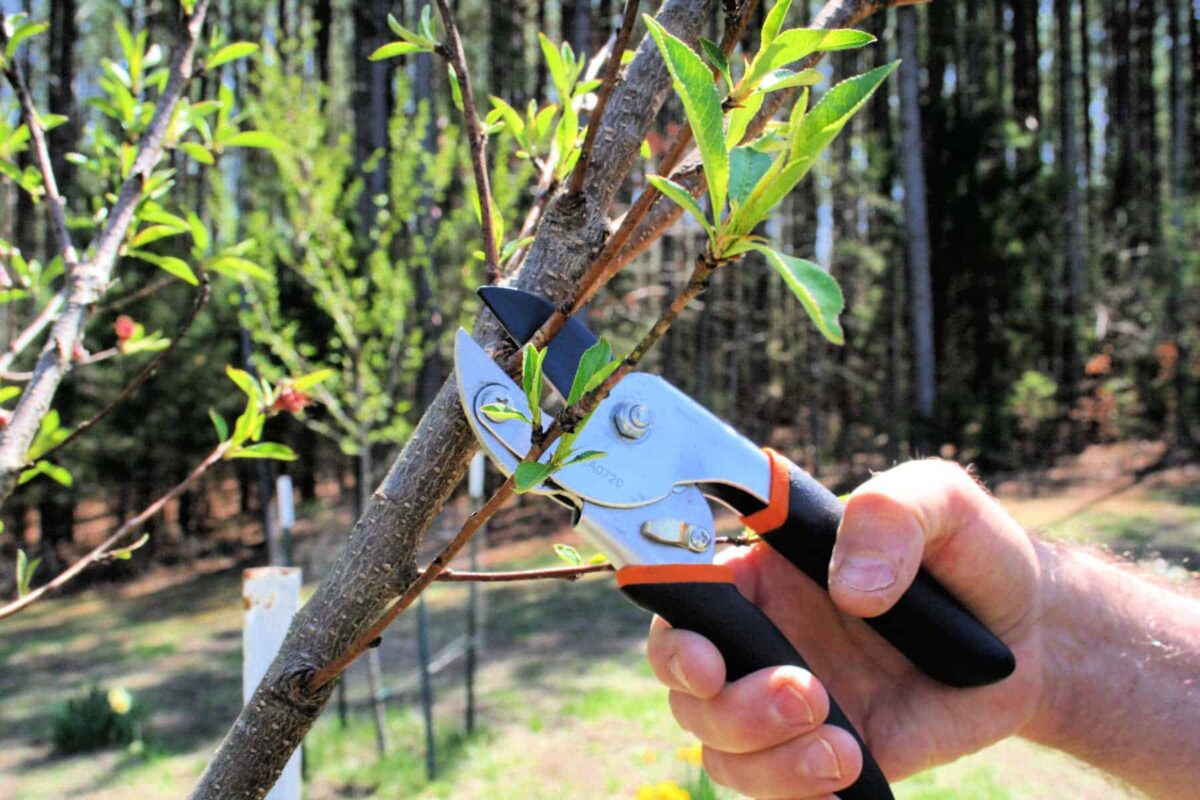
Step 3: Keep the Cuttings Moist
Keep the cuttings moist until you’re able to plant them. Here, I’ve wrapped the cut stems in wet paper towels until I can get back to the garage (which doubles as our potting shed).
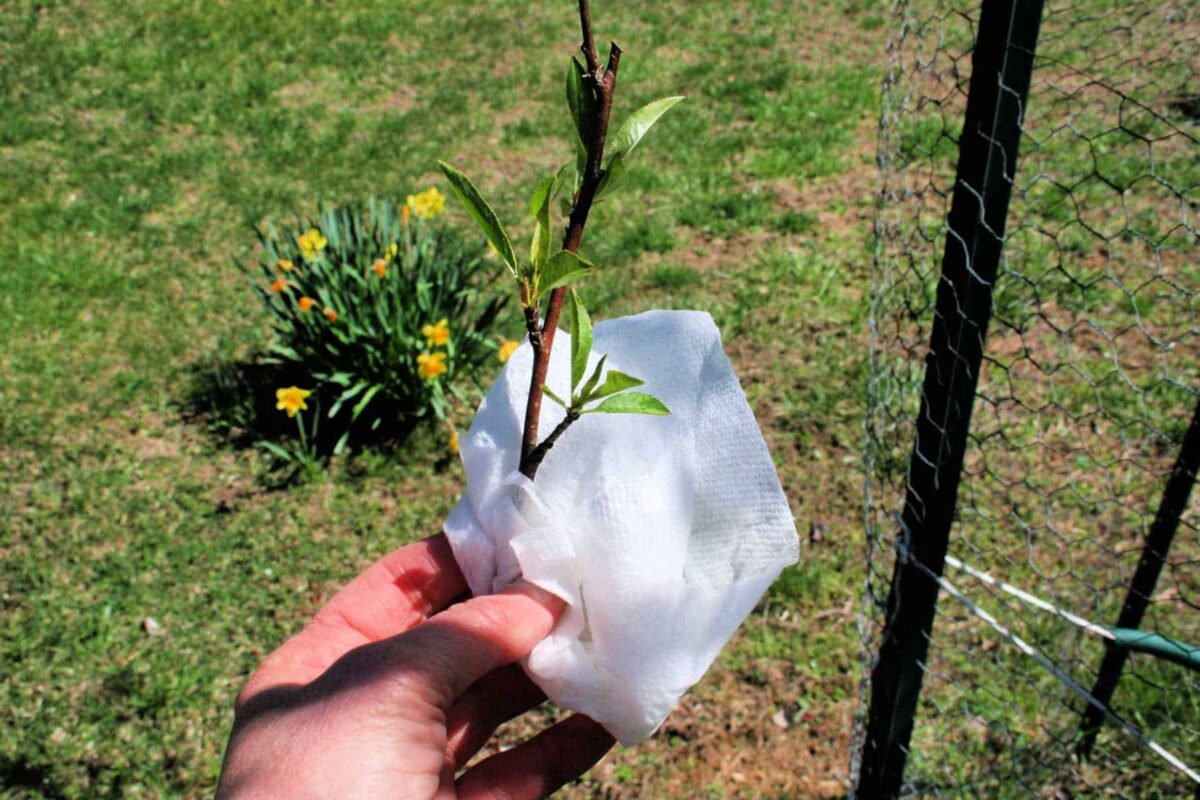
Step 4: Prepare the Stems
Prepare the stems for rooting by cutting off all leaves that will be below the soil level. Take your X-act knife and strip a bit of bark off the cut end of the stem. Then, cut the end at an angle.
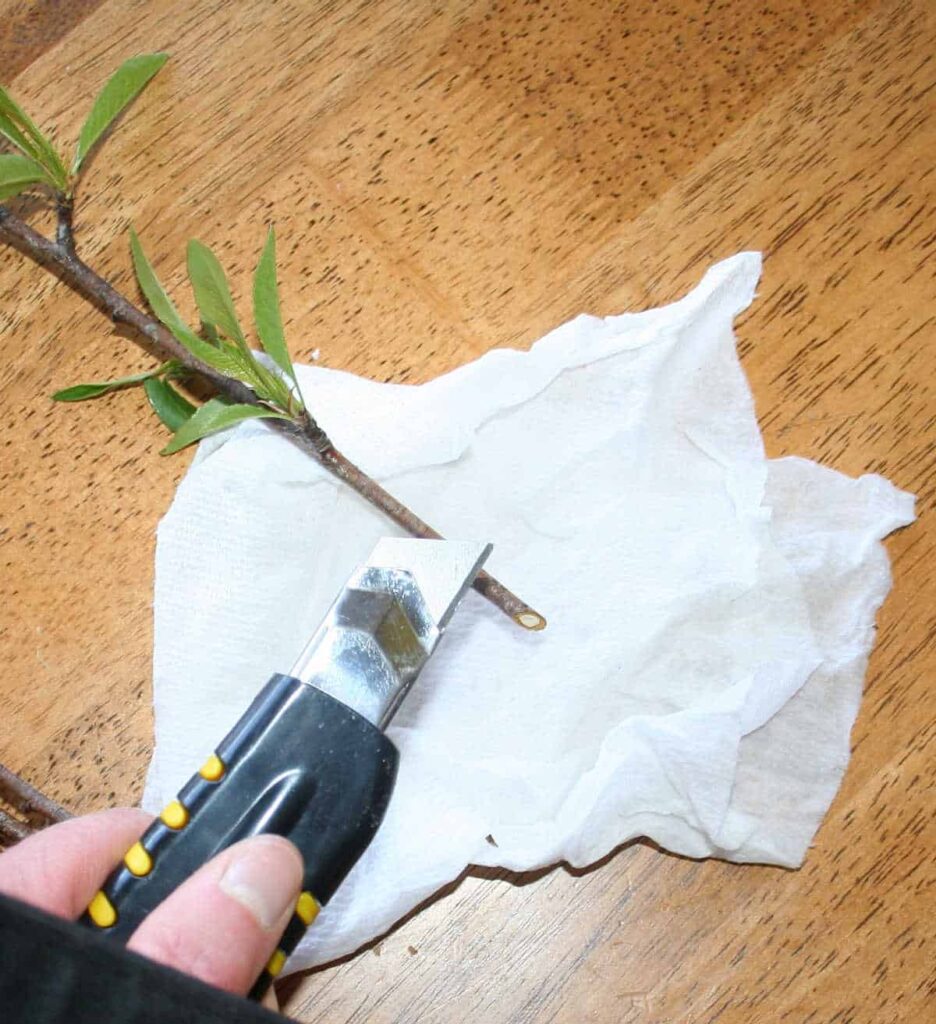
Step 5: Dip the Cut Stems in Rooting Hormone
Rooting hormone, or rooting powder, encourages the stems to grow roots. It’s a powder available online or in garden centers. Here, my husband just dips the stems into the jar of powder. A better way to do it would be to put a little powder in a dish or on a paper towel and roll the stem in it.
A good beginner’s rooting hormone – inexpensive, too. Garden Safe TakeRoot Rooting Hormone
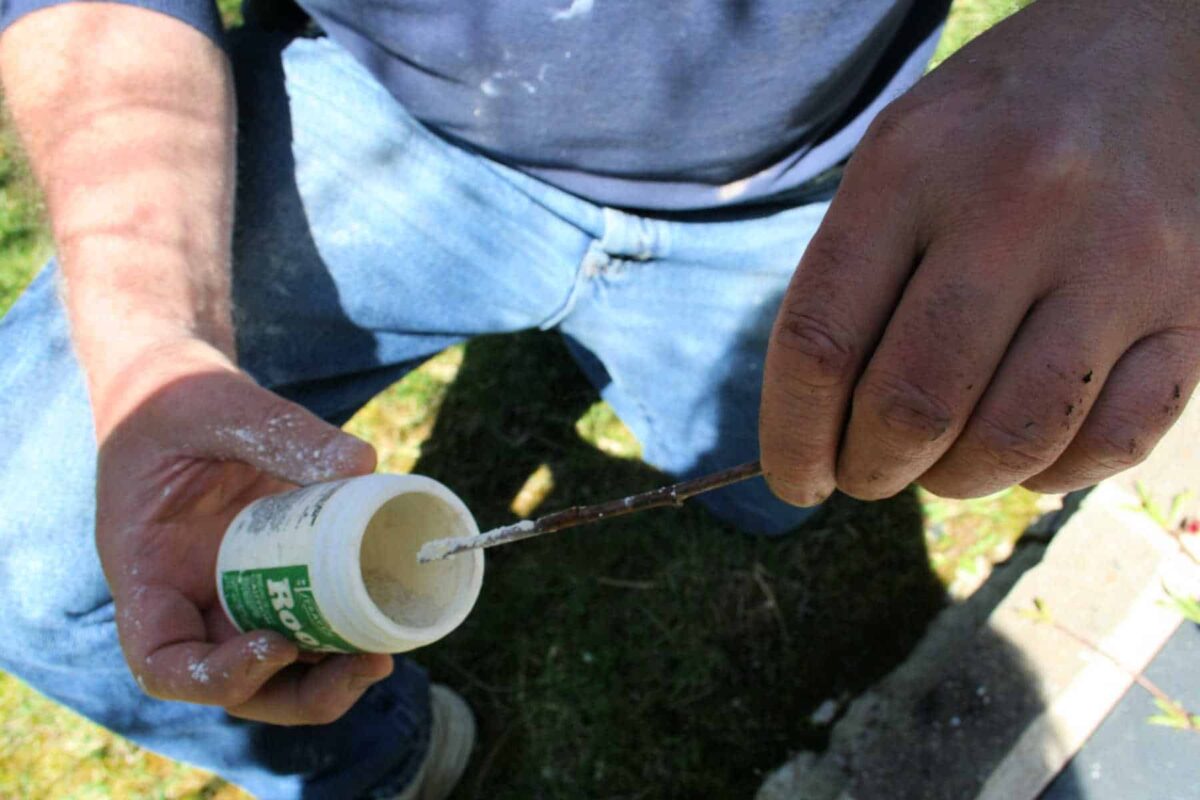
Step 6: Place Stems in Soil
Stick the stems, cut and powder-covered side down, into the pot filled with sterile potting soil. We always root more softwood cuttings than we think we need. I always have one or two not ‘take’ and die. If you’re lucky enough to have more than one grow roots, gift it to a friend.
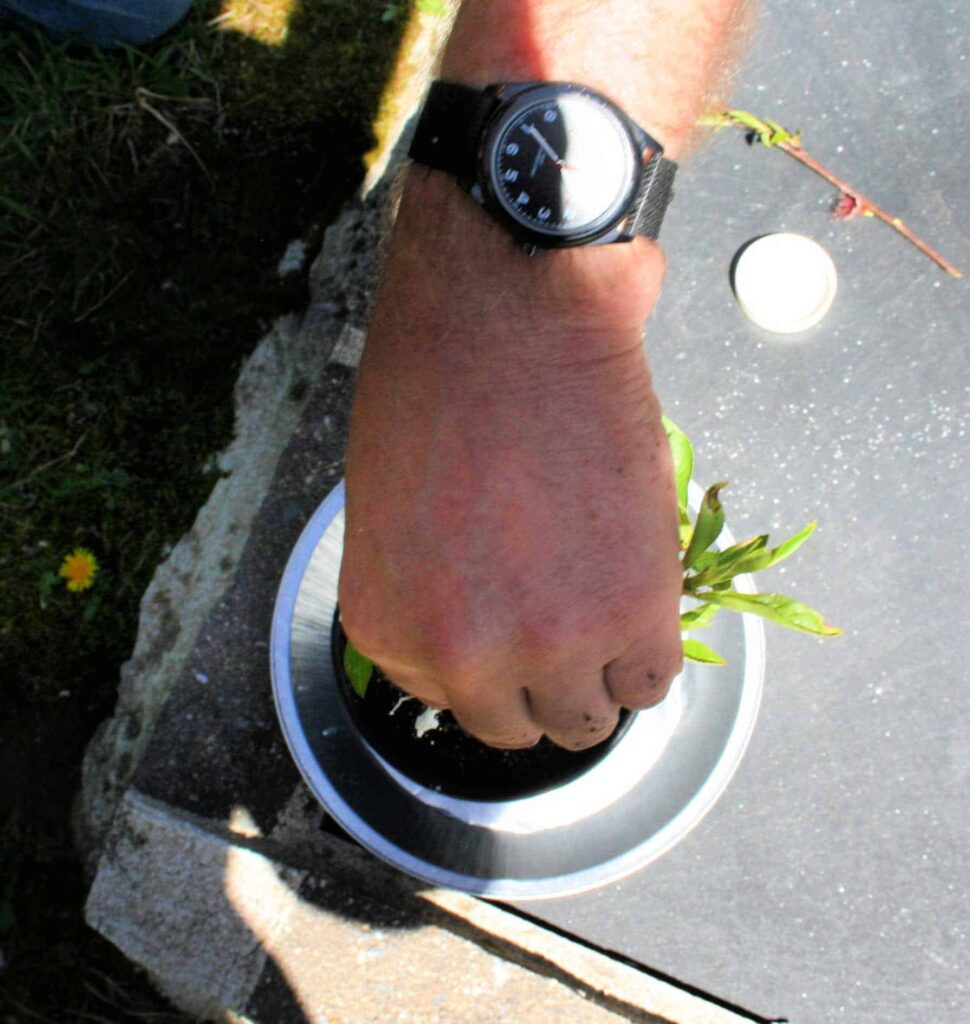
Step 7
Water your cuttings really well and place the pot on a tray in a sunny windowsill. Then, slide a plastic bag under the entire pot, draw it up and over the cuttings, and make it into a little tent. It will keep the cuttings humid and moist until they root. Open the bag daily to check and water the cuttings and to allow for air circulation.
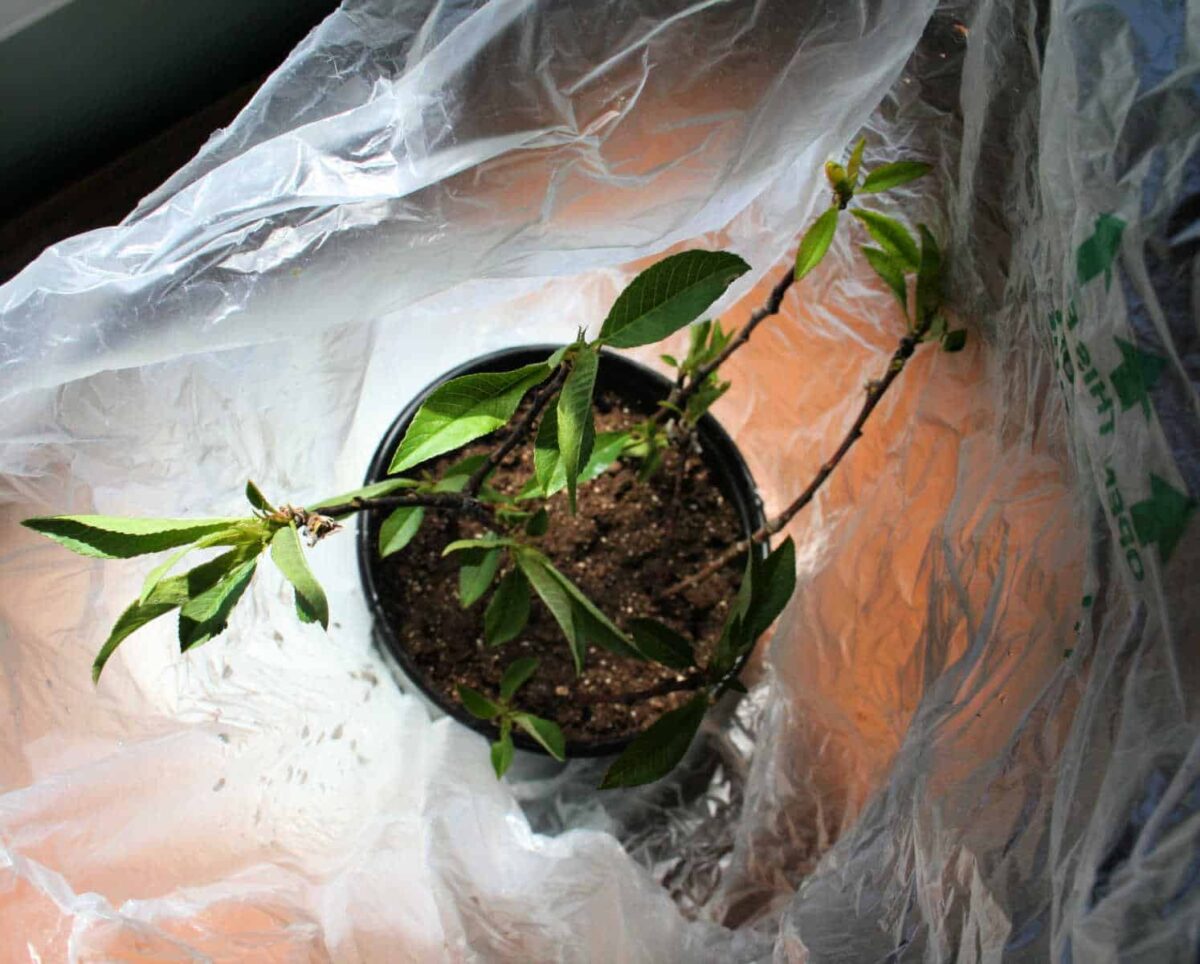

How Do You Know If the Peach Tree Cuttings Have Rooted?
One question many people have is, “How do you know if the peach tree cuttings have rooted?”
You’ll know you have a successfully rooted peach tree cutting when you see new growth on the cutting. Tiny leaves will start to appear, and the stem will look healthy and alive.
If the cutting fails, you’ll notice that too. The leaves will all turn brown or black and fall off. The stem will feel brittle.
What to Do With Rooted Cuttings
I hope you have success propagating your peach tree! If you do, and your cuttings take root, your next step is to transplant each rooted cutting into an individual pot. This gives them more time to grow and develop a good root system.
You can transplant the rooted cuttings into the garden in the fall, making sure the plants receive plenty of water. Or, wait another year if you can, and keep the plant growing indoors, and then the following spring, transplant it into the garden.
Growing peach trees from cuttings does take time, but in the end, it is worth the effort. You may need to try your hand at cuttings several times until you have success, but this method has served me in good stead for many years with other plants, and should work well with my peach tree. Hopefully, I’ll be in Red Haven “heaven” soon with more lovely trees to add to the orchard here at Seven Oaks!




